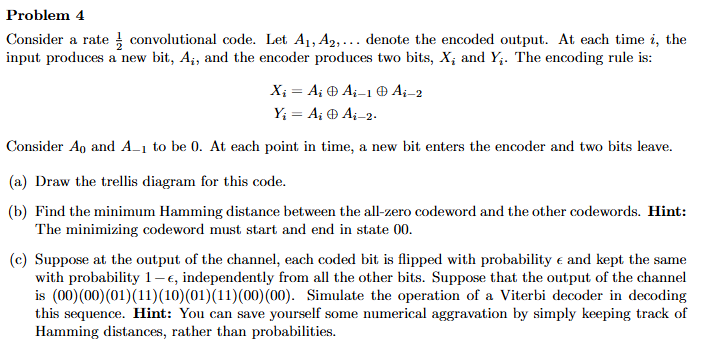Home /
Expert Answers /
Electrical Engineering /
problem-4-consider-a-rate-1-2-convolutional-code-let-a-1-a-2-dots-denote-the-encoded-output-pa926
(Solved): Problem 4 Consider a rate (1)/(2) convolutional code. Let A_(1),A_(2),dots denote the encoded output ...
Problem 4
Consider a rate (1)/(2) convolutional code. Let A_(1),A_(2),dots denote the encoded output. At each time i, the
input produces a new bit, A_(i), and the encoder produces two bits, x_(i) and Y_(i). The encoding rule is:
x_(i)=A_(i)o+A_(i-1)o+A_(i-2)
Y_(i)=A_(i)o+A_(i-2)
Consider A_(0) and A_(-1) to be 0 . At each point in time, a new bit enters the encoder and two bits leave.
(a) Draw the trellis diagram for this code.
(b) Find the minimum Hamming distance between the all-zero codeword and the other codewords. Hint:
The minimizing codeword must start and end in state 00.
(c) Suppose at the output of the channel, each coded bit is flipped with probability \epsi lon and kept the same
with probability 1-\epsi lon, independently from all the other bits. Suppose that the output of the channel
is (00)(00)(01)(11)(10)(01)(11)(00)(00). Simulate the operation of a Viterbi decoder in decoding
this sequence. Hint: You can save yourself some numerical aggravation by simply keeping track of
Hamming distances, rather than probabilities.